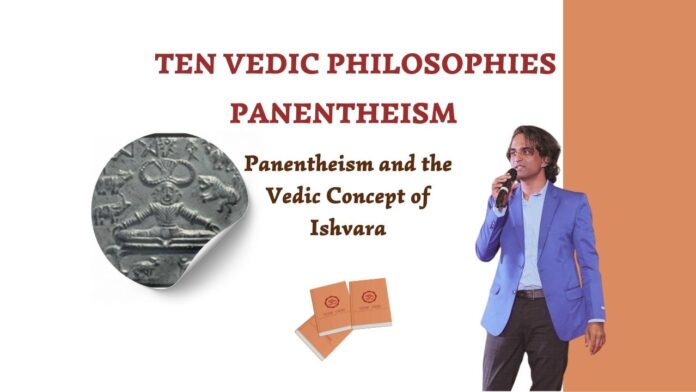Is God immanent or transcendent?
In the previous article, we discussed “pantheism” and in this article we will discuss the philosophical idea “panentheism”.
Panentheism is the belief that God is both within and beyond the universe. It suggests that the universe is part of God, but God is greater than the universe.
Charles Hartshorne was a prominent American philosopher and theologian who is widely considered one of the most influential figures in the development of panentheism. He was a strong advocate for the view that God is both immanent in the world and transcendent over it.
Thisview of “God” is similar to the Vedic concept of “Ishvara”. In this article we will discuss this concept from Vedic perspective.
Pantheism vs panentheism:
Pantheism:
1. God and the universe are identical.
2. There is no distinction between the divine and the created.
3. God is the universe, and the universe is God.
Panentheism:
1. God is both within and beyond the universe.
2. The universe is part of God, but God is greater than the universe.
3. God transcends the universe, while also being immanent within it
Ishvara: The Divine Master
Brahman: In the Vedic tradition, Ishvara is the personal aspect of Brahman, the ultimate reality. The term Ishvara indicates divine master who oversees the creation, sustenance, and destruction of the universe.
The master: In Bhagavad Gita (18:61) Lord Krishna says “The Supreme Lord dwells in the hearts of all living beings, O Arjuna. The Lord directs the wanderings of the souls and movement of cosmos which are seated on a machine made of material energy.” This shloka encapsulates the concept of “Ishwara” in the Vedic tradition.
Both immanent and transcendent: The said shloka says that God is both immanent and transcendent. In other words, God is immanent in all material & spiritual beings and at the same time God transcends all of these & directs the cosmic play.
Viruddha-dharma:
Viruddha-dharma refers to the seemingly contradictory or paradoxical nature of Brahman as described in Vedanta, specifically Ishavasya Upanishad.
Ishavasya Upanishad: The Upanishad describes Brahman as “that moves and that moves not; that is far and the same is near; that is within all this and that also is outside all this” (Verse 4). These seemingly contradictory descriptions (viruddha dharma) aim to convey the ineffable nature of Brahman, which is beyond human comprehension and can only be experienced through spiritual realization.
Brahman’s pervasiveness: Describing Brahman as both immanent and transcendent further emphasizes Brahman’s pervasiveness. It is the essence of everything, yet it also transcends the limitations of the universe. This dual nature of Ishvara allows for a rich and multifaceted understanding of the divine. It enables us to experience the divine both within ourselves and beyond the cosmos.
This dual nature of Brahman is a central theme in many philosophical and spiritual traditions, emphasizing the interconnectedness of the individual self with the divine and the universe. From this perspective, panentheism is much closer the Vedic thought process.
Surrender:
Ishvara Pranidhana: It is a key concept in the Yoga Sutras of Patanjali, referring to the practice of surrendering to a higher power. It’s considered one of the five Niyamas, or ethical observances, that pave the way for spiritual growth and liberation.
Prapatti: It is a key concept in the Bhakti tradition, is the act of complete and unconditional surrender to God. It is a path to liberation that emphasizes faith, humility, and acceptance of divine grace.
The Practical Implications
In meditation: Sadhaka must meditate upon the “viruddha dharma” of the almighty. Without this perception, the meditation becomes a mere imagination bound to physical realm. Sadhaka must meditate both aspects of Brahman – i.e., its immanence and transcendence.
The take away: Ultimately, the concept of Ishvara offers a harmonious blend of personal devotion and cosmic consciousness, empowering us to live a more meaningful and fulfilling life. By understanding the concept of Ishvara, we can deepen our spiritual practice. We can recognize the divine presence in all beings and things, fostering compassion and empathy. We can also cultivate a personal relationship with the divine through prayer, meditation, and devotion.
Devotion: Once Sadhaka’s heart is engrossed in devotion, he / she must consciously practice both ishwara pranidhana and prapatti. This is the key to liberation.
In the next article, we will discuss the philosophical idea “Absolutism”.
Madhwesh K
Vedic Tribe

